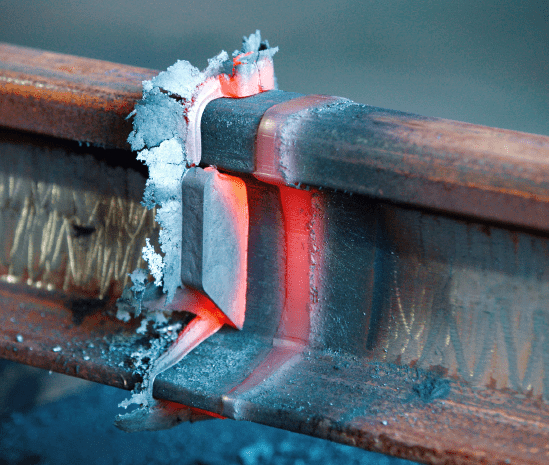The Ultimate Guide to Welding WPS Procedures: A Thorough Summary for Welders
In the complex globe of welding, Welding Procedure Specs (WPS) serve as the foundation of guaranteeing quality, consistency, and safety and security in welding operations (welding WPS). As we dive right into the different components of a WPS and explore the intricacies of credentials and qualification, we will certainly reveal the important role these treatments play in the world of welding.
Significance of WPS Procedures
Recognizing the relevance of Welding Procedure Specs (WPS) treatments is critical for making certain the top quality and integrity of welded frameworks. WPS procedures offer as a roadmap for welders, detailing the required steps, criteria, and materials needed to achieve an audio weld. By adhering to WPS guidelines, welders can make certain uniformity in their job, causing trustworthy and structurally sound welds.
One of the primary reasons why WPS treatments are essential is their function in keeping weld quality and integrity. Adhering to the defined welding parameters and techniques described in the WPS aids prevent problems such as porosity, breaking, or incomplete fusion, which can endanger the toughness and longevity of the weld.

Parts of a WPS
A Welding Procedure Requirements (WPS) usually makes up important components that detail the details needs for performing a weld, making certain uniformity and high quality in the welding procedure. The essential parts of a WPS consist of necessary variables such as base metals, filler steels, preheat and interpass temperatures, welding processes, protecting gases, welding positions, and post-weld warmth treatment demands.
Base metals describe the materials being signed up with, while filler metals are used to fill up the void between the base metals throughout welding. Preheat and interpass temperatures are essential for managing the warm input and avoiding concerns like cracking or distortion. The welding process outlines the specific strategy to be used, whether it's gas metal arc welding (GMAW), shielded steel arc welding (SMAW), or another technique. Shielding gases secure the weld swimming pool from atmospheric contamination. Welding settings define the alignments in which welding can be done. Post-weld warmth treatment may be required to alleviate stresses and improve the weld's properties. An extensive understanding of these parts is vital for developing a extensive and efficient WPS.

Certification and Accreditation
Having developed the essential components of a Welding Treatment Requirements (WPS), the emphasis now moves in the direction of the crucial aspects of credentials and qualification in welding practices.

Accreditation, on the various other hand, is the official acknowledgment of a welder's qualifications by a relevant accreditation body or organization. Welding accreditations are generally based on the particular welding procedures, products, and positions a welder is certified to deal with. Holding a legitimate welding certification demonstrates that a welder satisfies market standards and is experienced to carry out welding tasks to the required specifications.
Creating a WPS
To establish a Welding Procedure Specification (WPS) that meets sector criteria, careful factor to consider of welding procedures, products, and functional criteria is necessary (welding WPS). The initial step see here in producing a WPS is to recognize the welding procedure to be utilized, such as gas steel arc welding (GMAW) or secured steel arc welding (SMAW) When the welding procedure is identified, the following important aspect is choosing the suitable products, thinking about variables like base metal kind, thickness, and joint layout. Functional specifications such as welding existing, voltage, travel speed, and protecting gas structure have to also be diligently specified in the WPS.

Applying and Keeping Track Of WPS
Upon settling the detailed Welding Treatment Requirements (WPS) that diligently details welding procedures, materials, functional specifications, and high quality guarantee actions, the emphasis changes to efficiently implementing and keeping track of the recognized treatments. Execution involves ensuring that all welders involved in the task are acquainted with the WPS and follow it carefully throughout the welding procedure. Efficient application and tracking of the WPS are essential for guaranteeing the stability, stamina, and safety of the welded joints, eventually adding to the total success of the welding job.
Verdict
Finally, understanding and complying with Welding Procedure Specs (WPS) is important for welders to make sure quality, consistency, and security in their work. By recognizing the elements of a WPS, acquiring correct certifications and certifications, creating detailed treatments, and carrying out and monitoring them efficiently, welders can enhance their abilities and proficiency in welding methods. Abiding by WPS treatments is important for creating premium welds and conference market standards.
In the complex world of welding, Welding Treatment Requirements (WPS) serve as the foundation of ensuring top quality, consistency, and security in welding operations. The welding process outlines the certain method to be used, click here to read whether it's gas metal arc welding (GMAW), protected steel arc welding (SMAW), or an additional approach.To establish a Welding Treatment Requirements (WPS) that meets sector requirements, cautious consideration of welding procedures, materials, and operational parameters is crucial. The first step in creating a WPS is to determine the welding procedure to be utilized, such as gas metal arc welding (GMAW) or secured metal arc welding (SMAW)Upon wrapping up the detailed Welding Treatment Specification (WPS) that thoroughly details welding procedures, products, functional criteria, and high quality assurance actions, the emphasis changes to properly investigate this site carrying out and checking the well-known procedures.
Comments on “Welding WPS for Beginners: Getting Started with Welding Treatment Requirements”